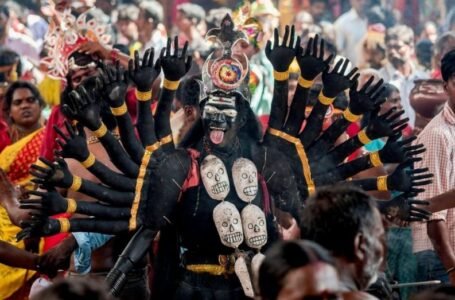Viking Age Tattooing: Protection, Identification, and Deity Honoring
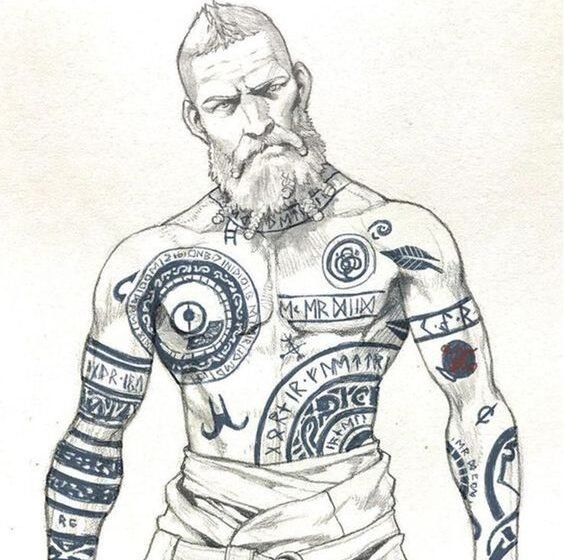
Vikings, who are frequently portrayed as fearless warriors and swashbuckling traders, had a lasting
impression on history via their exploration, conquests, and cultural customs. One of these customs was
the practice of tattooing, which had several functions in Viking culture. Although the precise breadth and
significance of tattooing during the Viking Age are still up for question, historical and archaeological data
sheds light on the use of tattoos for identity, protection, and the veneration of deities. The Norse people
had a period of exploration, expansion, and cultural interchange during the Viking Age, which lasted from
the late 8th to the early 11th century. The Vikings are known for their skill at sea and in battle, but they
also left behind a rich heritage of creative expression, including the custom of tattooing. While most of
the Viking tattooing evidence has been lost to time, archaeological discoveries and historical sources
provide fascinating insights into these mysterious people’s tattooing customs. We explore the meanings,
functions, and importance of Viking tattoos in this article as we dig into the world of these legendary
warriors.
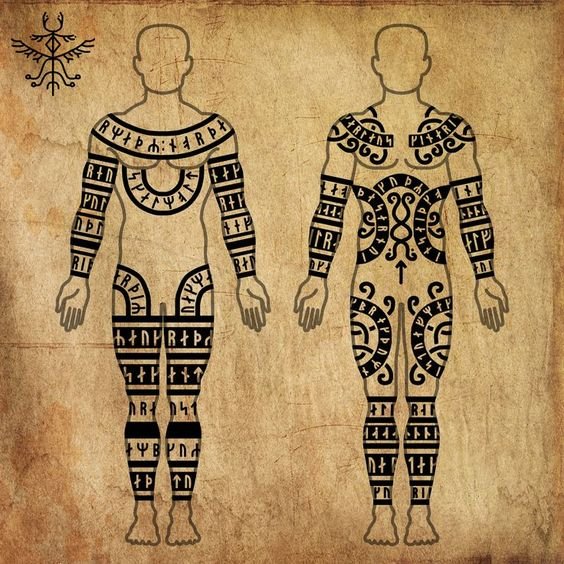
The cultural tradition of getting tattoos:
The idea of tattooing was not alien to Viking civilization; on the contrary, it was ingrained in their way of
life. The deity Odin himself was connected to tattooing in Norse mythology. According to tradition, Odin
inscribed holy tattoos known as “Ondvegissulur” on the bodies of the dead Einherjar warriors. The
warriors who had these tattoos were thought to get protection and entry into Valhalla, the majestic hall of
slain heroes, after death.
Each symbol and pattern used in Viking tattoos had a specific significance and function. Based on a
person’s own views, experiences, and geographical influences, the choice of motifs frequently varied. A
Viking from a coastal location, for instance, would use nautical symbols like waves, ships, or sea serpents
to represent their intimate connection to the sea and marine activities. On the other hand, inland Vikings
could decide to have tattoos that are influenced by their agricultural way of life and include pictures of
animals, fertility signs, or allusions to their ties to the land. Another well-liked pattern was the sun and
moon, often known as Sol and Mani, which stood for a time, life cycles, and the harmony of light and
darkness.

Safety and Symbolism:
For the Vikings, tattoos had important protective symbols. The act of getting a tattoo was believed to
provide the person with spiritual strength and protect them from danger. Tattoos were especially popular
among warriors as a way to show their courage and increase their fighting skills. Axes, swords, and
shields were frequently included in these tattoos as emblems of bravery, fortitude, and triumph. Vikings
thought that by wearing these symbols on their bodies, they might harness their power and direct it toward battle.

Protection was one of the main motivations for getting tattoos. The Vikings needed ways to protect their
bodies because of the harsh terrain they lived in and their frequent exposure to the elements and conflicts.
Tattoos were thought to provide a layer of supernatural defense, boosting the wearer’s fortitude and
resiliency. These tattoos frequently decorated the arms, shoulders, and neck areas of the body that were
most vulnerable in battle.
Identity and Social Status:
In Viking culture, tattoos also served as a form of identification and a symbol of social standing. Various
tattoos might signify a person’s clan, devotion, or accomplishments. A warrior’s tattoos might serve as a
personal autobiography, displaying their achievements and highlighting their place in the community. In
addition to serving as a form of self-expression, tattoos served as a means of expressing one’s position
within the complex Viking social structure. Additionally, tattoos were used to determine a Viking’s place
in the warrior hierarchy. Greater social rank and accomplishments were frequently indicated by tattoos
that were more intricate and comprehensive. These marks were not only a source of individual pride, but
also a symbol of commitment and skill.
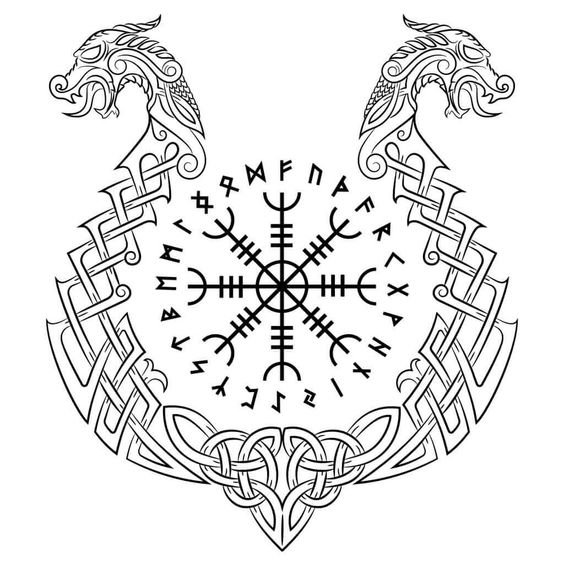
Respecting spiritual beliefs and deities:
The gods and goddesses in the pantheon of the intensely religious Vikings had an impact on many facets
of their existence. Tattoos were a practical means to pay homage to these gods and demonstrate one’s
religious convictions. The many gods and goddesses’ insignia were permanently engraved into the skin,
acting as a bridge between the human and heavenly worlds. For instance, the tattoos of Vikings frequently
featured Mjölnir, Thor’s hammer. Wearing this sign was thought to evoke Thor’s power and protection,
which appealed especially to warriors who had to deal with the uncertainties of combat and exploration.
Similar to this, it was believed that getting tattoos of Huginn and Muninn, Odin’s ravens, would bring
insight and direction from the Allfather himself.
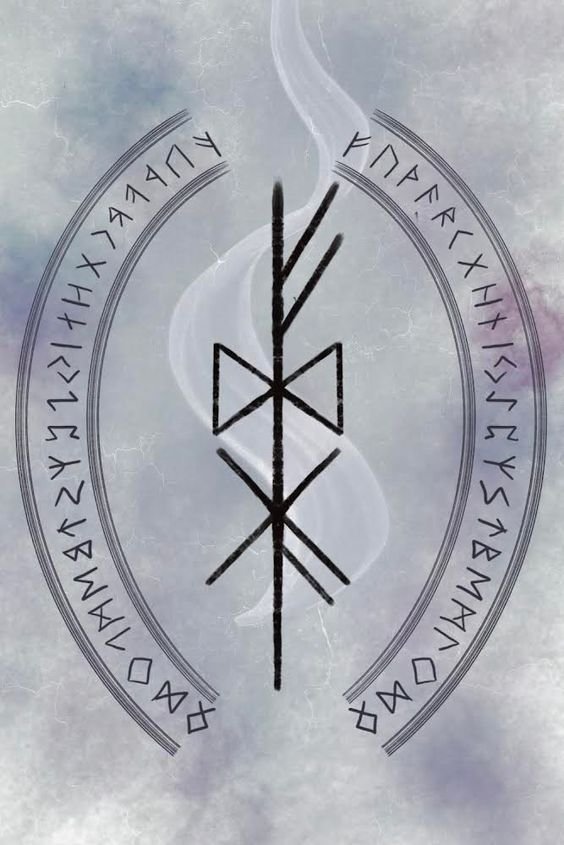
Another god that the Vikings inked tattoos of was Thor, the thunder god. Tattoos in the form of hammers,
like Mjölnir, the fabled weapon of Thor, were thought to call upon the might and defense of the deity.
Warriors who want to enlist the help of Thor in battle or enlist his blessings for a successful raid were
particularly fond of these tattoos. In addition to specific deities, tattoos also had a more general spiritual
value. The Yggdrasil, the cosmic tree that linked the many spheres of existence, served as a representation of how everything is intertwined. It was thought that getting this holy tree tattooed on one’s body would improve their grasp of the universe and their connection to the spiritual realm.
The Legacy of Viking Tattooing:
Viking tattooing was probably common, but its tangible remains have proven difficult to find. It has been
difficult for academics to definitively record the entire breadth of Viking tattoo traditions due to the lack
of well-preserved human remains from the Viking Age and the transient nature of tattoos on the skin.
However, we may get important insights regarding this historic activity via explorer stories, sagas, and
visual representations in art and artifacts.

Conclusion:
In conclusion, tattooing in the Viking Age was a multifaceted activity with strong roots in cultural, social,
and spiritual elements. It was more than just a fashion statement. Tattoos had several functions in Viking
civilization, from providing identity and protection to worshiping deities and expressing social rank. We
learn more about this ancient art form and its importance in the lives of these amazing mariners and
warriors as contemporary experts investigate the archaeological evidence and historical sources. Similar
to how the Vikings made a lasting impression on history, tattoos have a lasting impact on culture and the
history of human expression.

The tattooing practices of the Vikings were a sophisticated synthesis of art, mysticism, and utility. In
addition to serving as a form of identity and a way to connect with their pantheon of gods, tattoos also
served as a sort of protection. We are given a fascinating glimpse into the thoughts and motivations of
these fearless warriors thanks to the symbolism ingrained in these elaborate decorations. Even though
there may not be much tangible proof, Viking tattooing practices have persisted throughout history,
reminding us of the complex and varied aspects of their civilization. We come to appreciate the complex
tapestry of ideas and practices that impacted the lives of the Vikings throughout this fascinating period of
history as we learn more about their tattooing traditions.

